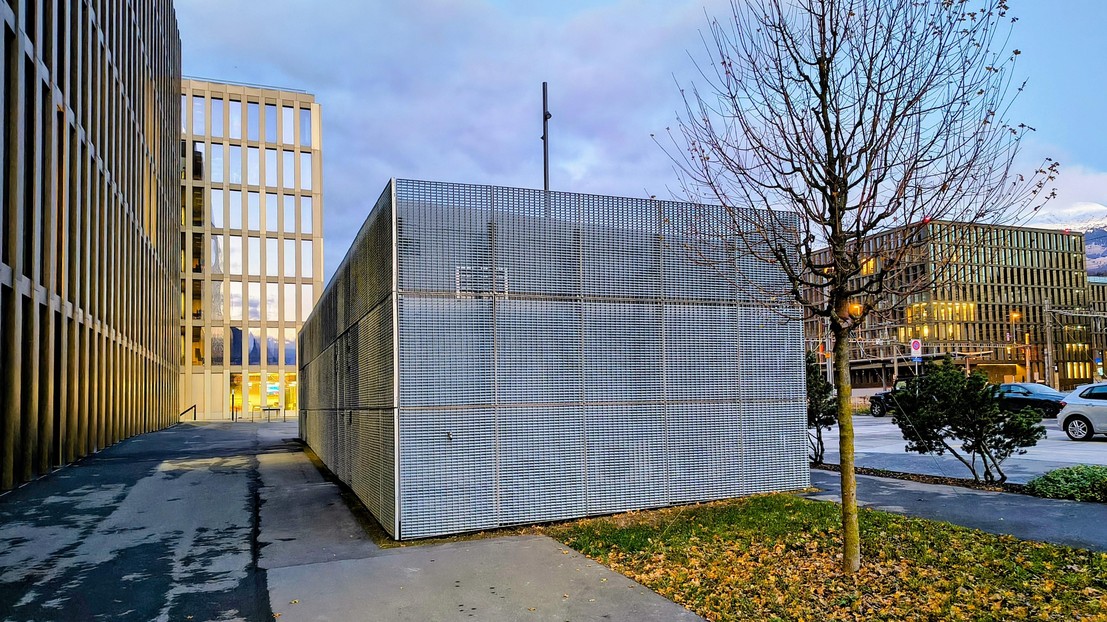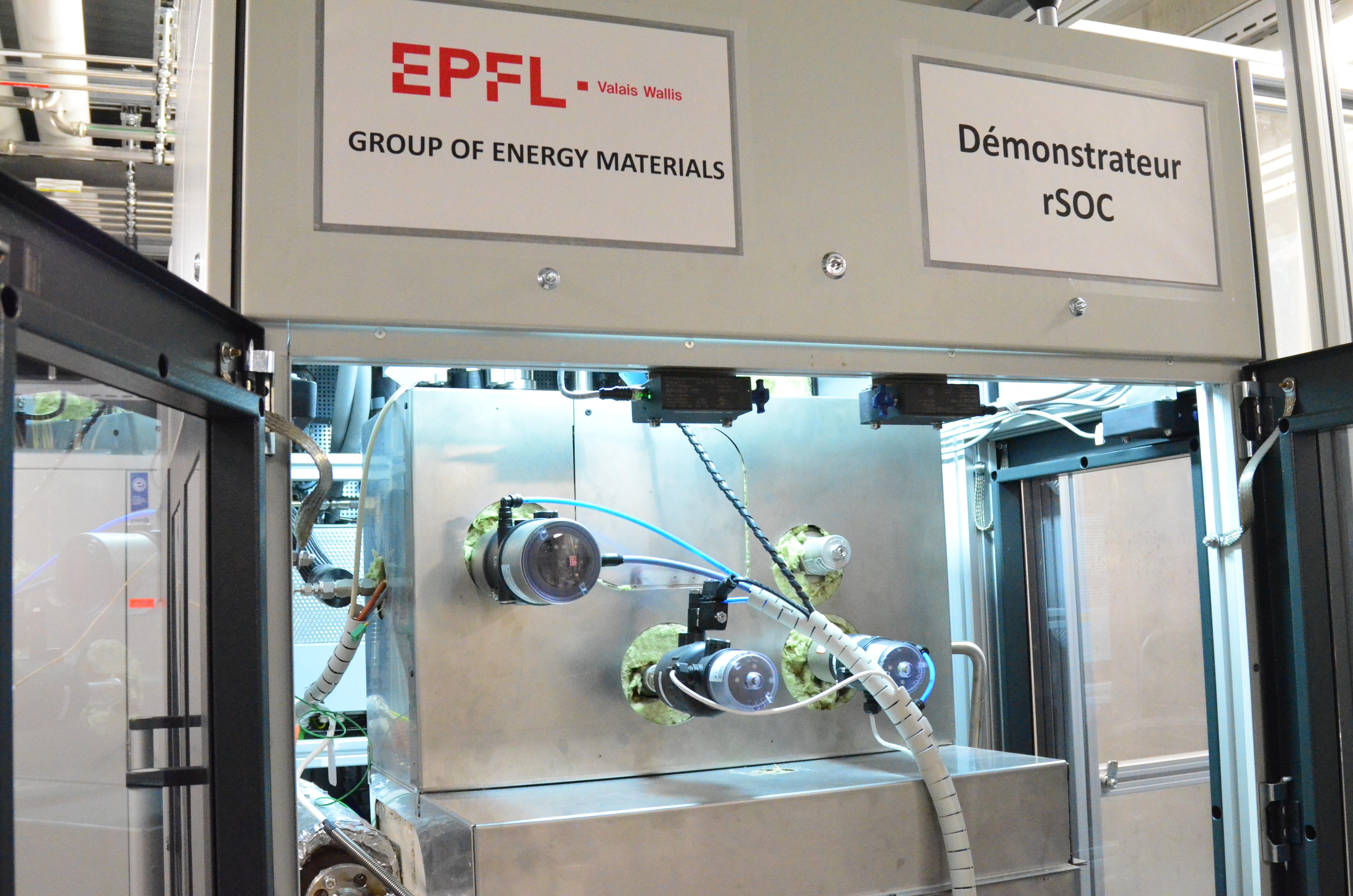
© 2025 Jessen Page
The new power-to-gas demonstrator installed at the Energypolis campus in Sion will enable engineers to test promising approaches for advancing the energy transition, such as carbon capture and seasonal power storage in the form of gas. The system was developed through a joint initiative involving EPFL, the HES-SO Valais-Wallis School of Engineering and several local businesses.
With this new power-to-gas demonstrator, EPFL and HES-SO are taking concrete steps to facilitate the adoption of renewable energy and help improve Switzerland's energy security, especially in the winter months. It's designed to study the large-scale seasonal storage of power in the form of methane through the use of electrolysis and carbon capture. This initiative positions Valais as a key driver of sustainable innovation in the energy sector and a center for engineering education, with the goals of speeding technology transfer to industry and supporting the Swiss government's 2050 energy strategy.
The demonstrator was inaugurated on Friday, 21 November, in a ceremony attended by Christophe Darbellay, vice president of the Valais cantonal government and head of the canton's department of economy and education, and Ambrogio Fasoli, EPFL Provost and Vice President for Academic Affairs. The demonstrator was presented to them by their hosts Gaëtan Cherix, director of the HES-SO Valais-Wallis School of Engineering, and Léonard Evéquoz, head of the EPFL Valais-Wallis campus in Sion.
Storing electricity in the form of gas
Power-to-gas systems involve converting electrical power into gas so that it can be stored and then deployed to fill seasonal gaps in renewable-energy generation (e.g., from wind turbines, solar panels and hydropower plants). The EPFL/HES-SO demonstrator provides a concrete solution whereby excess power generated in the summer is converted into either hydrogen (drawing on research done by senior scientist Jan Van Herle at EPFL and Prof. Christoph Ellert at HES-SO Valais) or methane (drawing on joint research by Van Herle and Jessen Page at HES-SO Valais). These gases can be stored at length or injected into the gas grid. When power is subsequently needed, such as during times of high demand in the winter, the process can be reversed to convert the gas into electricity or heat. Seasonal storage capabilities like those demonstrated here are essential for stabilizing power grids and securing Switzerland's energy supply.

Capturing carbon at the source
Carbon capture systems are critical components of our efforts to reach net zero. In the case of the demonstrator, carbon is captured right where it is emitted - before it's released into the air - and then fed into the methanation reaction. This process draws on two pioneering technologies that came out of EPFL's Valais-Wallis campus: porous graphene membranes for filtering CO₂, which were developed from the proof-of-concept stage to a full-scale prototype by EPFL Prof. Kumar Agrawal's research group; and metal-organic frameworks that work like tiny sponges to absorb the filtered CO₂ in large amounts, created by EPFL Prof. Wendy Queen. After being chemically converted, the CO₂ is either stored or transported in liquid form.
Supporting the energy transition
The demonstrator reflects Valais Canton's goal of encouraging the development of large-scale clean-energy facilities. It was set up with funding from Fonds Démonstrateurs Énergie Valais, a CHF 5 million fund that promotes the creation of demonstrators on the Energypolis campus and elsewhere in the canton in association with EPFL, HES-SO Valais-Wallis and local businesses.
"Smart solutions that combine electrical power, gas and heat, along with carbon capture systems, will be key technologies for enabling the energy transition," says Gaëtan Cherix, director of the HES-SO Valais-Wallis School of Engineering. "Our demonstrator leverages the expertise of both EPFL and HES-SO and gives engineers an ideal workbench for testing new methods. It also lets our schools give tomorrow's energy-system experts a hands-on education." Léonard Evéquoz, head of the EPFL Valais-Wallis campus in Sion, adds that "beyond the engineering prowess of the demonstrator and its capacity to directly address pressing energy challenges, it also illustrates the benefits of a successful, pragmatic collaboration among EPFL, HES-SO and businesses including Gaznat, OIKEN, enevi, ExerGo and Zero-C."
With the new power-to-gas demonstrator, Valais Canton is taking yet another step toward a circular energy economy where renewables can be employed all year long. The initiative combines technological innovation with university partnerships and a regional planning approach, providing tangible proof of the canton's potential to become a center of excellence in decarbonization and the energy transition.






